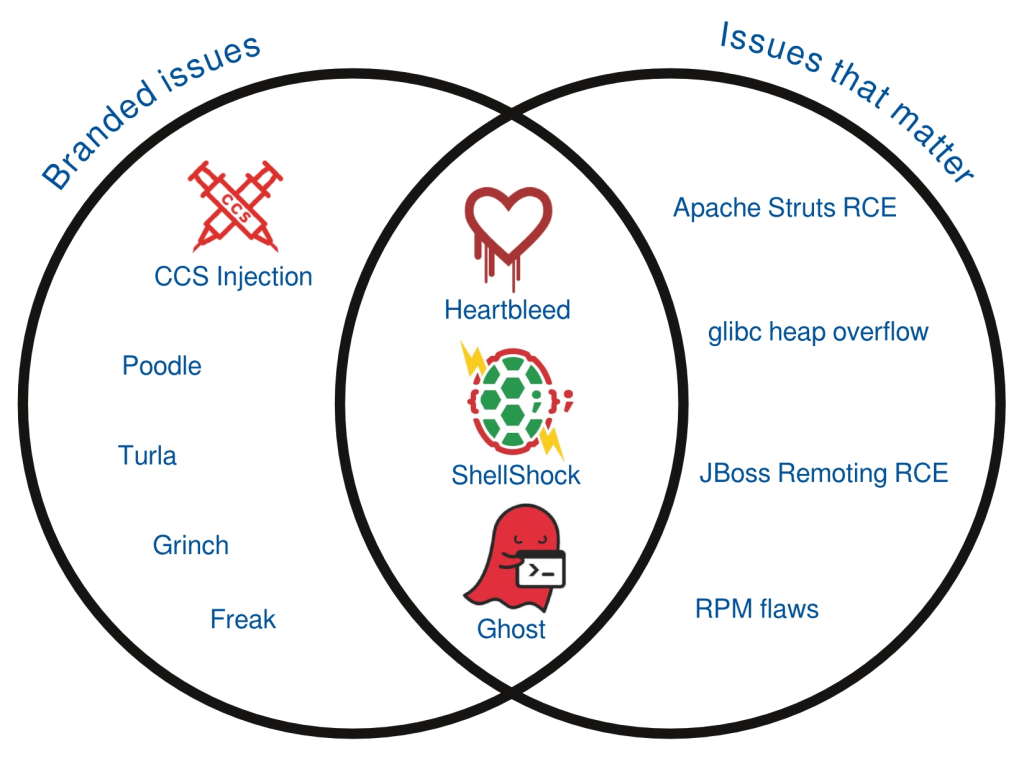

Image courtesy of Red Hat
"Microsoft must be laughing quite hard seeing all that media manipulation.""Dear journalists," I said earlier today in social media (Diapora), "bugs don't have birthdays. Stop finding excuses to bring "Heartbleed" BS (MS name for old bug) to headlines." I spoke to one author about it and challenged him for floating these "Heartbleed" logos and brands yet again. To us it seems quite evident that Microsoft keeps attacking Free software and GNU/Linux like no time before; it's just more subtle and hidden in more sophisticated ways. The person who heads the incognito firm that's known only for the "Heartbleed" brand (they control the brand) came from Microsoft (he was head of security there) and also from the FBI, whose stance on encryption is widely known by now; they actively seek to break security of software, so knowing about the 2-year-old OpenSSL bug would make sense. Some reputable media reports said that the NSA had known about this bug for about a year before it was known to the public and the NSA cooperates with the FBI on breaking software security, sharing personal (illegally intercepted) data, etc.
Anyway, the same publication (as above) also floated the "Heartbleed" nonsense in another article today. Would they do just about anything to keep it in headlines? Even a year later? They are now citing some firm called Venafi (never heard of it before), which basically relies on misleading misuse of statistics. It's FUD from a company that tries to make money from perceived dangers and accentuates these dangers in an effort to acquire clients. What kind of 'journalism' is this? incidentally, Black Duck is now joining the list of such parasitic companies, with new hires and multiple press releases, so clearly it's a growth area and the Microsoft link is easy to see. It is FUD season again this spring as more publications now float this whole nonsense. This is hardly journalism, it's just throwback.
Thankfully enough, Red Hat demonstrates what "branding" of FOSS bugs practically means, even using the image above. There is no correlation between the naming of bugs and their severity, but press coverage sure loves a good brand. This is an important (albeit belated) response from Red Hat to "branding" of a FOSS bug by Microsoft-linked firms like the one behind "Heartbleed".
"It’s been almost a year since the OpenSSL Heartbleed vulnerability," says Red Hat, "a flaw which started a trend of the branded vulnerability, changing the way security vulnerabilities affecting open-source software are being reported and perceived. Vulnerabilities are found and fixed all the time, and just because a vulnerability gets a name and a fancy logo doesn’t mean it is of real risk to users."
Well, Microsoft folks sure squeezed everything they could from this bug, seeking to discredit not just OpenSSL but the whole development process of Free software (due to just one small bug, or a few lines of code). And Microsoft still pretends that it is warming up to Open Source? Who are these frauds kidding?
There's a lot of companies which continue to use platforms with back doors, such as Windows, but the Wintel-oriented media would rather we just obsess over this one bug from one year ago (which was patched as soon as it became publicly-known).
We are rather disappointed to see a decent journalist like Sean Michael Kerner, along with colleagues at eWEEK, swallowing the bait and serving to promote the misleading claims to advertise this company that controls the "Heartbleed" brand, among other opportunists (like fish swimming around a shark for some leftovers). Microsoft must be laughing quite hard seeing all that media manipulation. ⬆